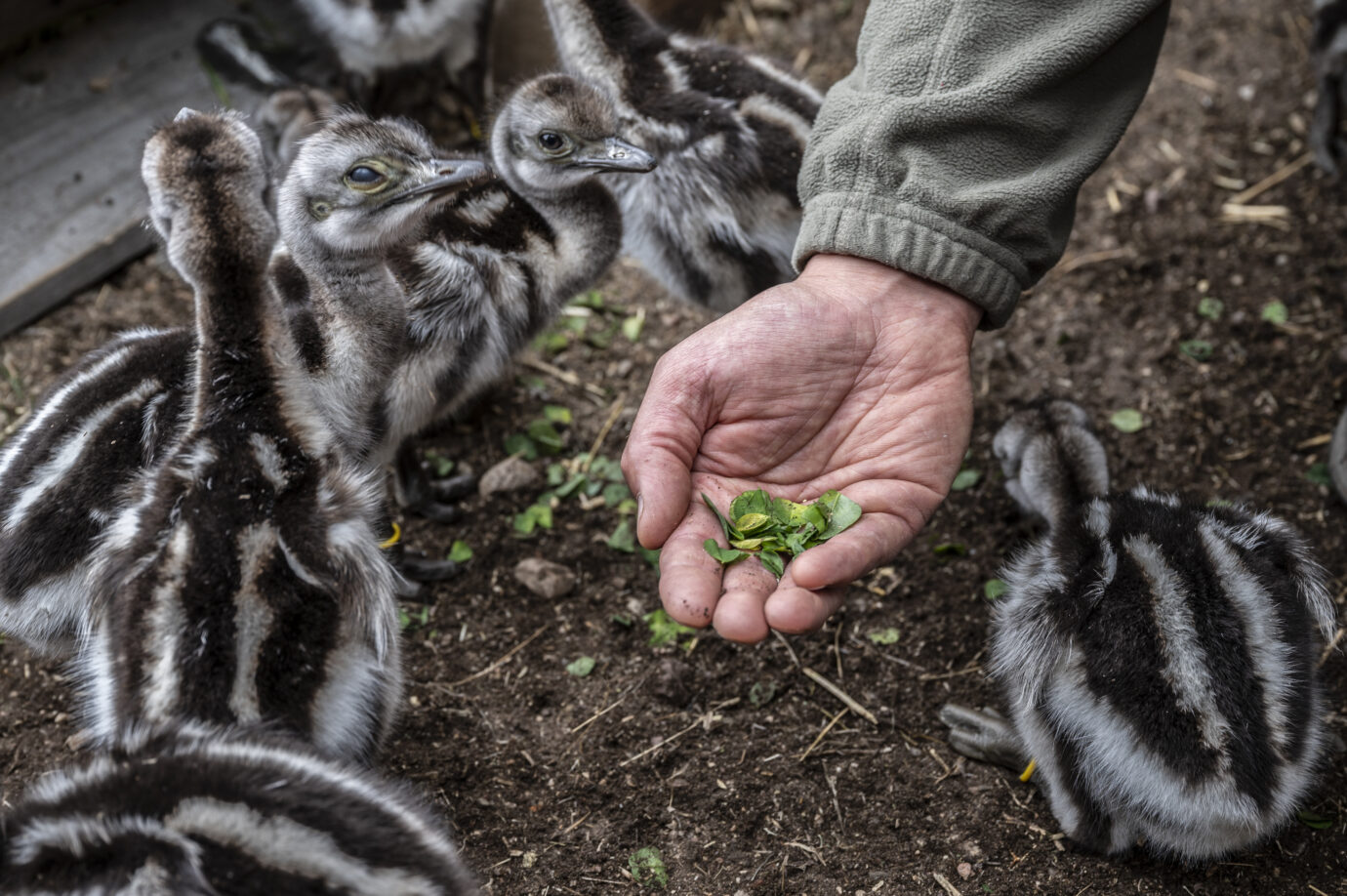
Charitos | Foto: Marcelo Mascareño para Rewilding Chile
Thanks to the collaborative work between Estancia Baño Nuevo, the organization Reserva Quimán and Fundación Rewilding Chile, a group of newborn wild rheas will help reverse the local extinction of the species in Patagonia National Park.

Charitos | Foto: Marcelo Mascareño para Rewilding Chile
After being alerted to a nest with abandoned rhea eggs at the Baño Nuevo Ranch, Aysén Region, Rewilding Chile’s Wildlife team acted quickly to move them to an incubator and inspect them. Fortunately, the efforts were successful. 14 charitos were born! After hatching, they traveled to the Quimán reserve in Futrono, where an adult male adopted them.
A rewilding story: rescue, incubation, transfer, and adoption of the charitos.
Once the eggs were rescued, Rewilding Chile’s Wildlife Director, Cristián Saucedo, carefully analyzed and assisted each of them in an incubator. After 17 days, the first baby, rhea chick, was born. Little by little, it rose, gaining strength and calling its siblings with a whistle to come out of its eggs. This is known as the “synchronization for hatching” that happens in nature, which seeks that the siblings hatch in a limited period since then the father male, responsible for hatching and raising the chicks, will get up and go out to explore with them, leaving behind the eggs that have not hatched.
These little terns have a vital mission: to help reverse the local extinction of the species in Patagonia National Park. But to achieve this, they needed to be adopted by a ‘father’ who would shelter them under the warmth of his wings, as they cannot survive alone at night, so they traveled to Futrono, the breeding center of the Quimán Reserve is located. One of the males, with significant experience in parenting, took them in and will teach them the behaviors of the species until they are ready to return to the wild.
Unlike other species, the male rhea is in charge of incubating and protecting the chicks. They are highly dedicated and concerned parents. This parental care behavior, in which the males are either incubating or with their hatched chicks, allows them to adopt with great interest those that do not come from their brood.
"Nature is our ally. Since 2014 we have been working to protect this species. We have been able to promote these rewilding actions, giving a new opportunity to this group of little terns, which will play a crucial role in enriching the genetic variety of the species in Patagonia National Park," emphasizes Cristián Saucedo.
Reversing local extinction of the rhea in Aysén
Although this iconic Patagonian bird is listed as of least concern by the International Union for Conservation of Nature, the Chilean Ministry of Environment’s Wild Species Classification Regulations state that it is in danger of extinction in Aysén. Therefore, it is essential to reverse this trend, strengthening its population by transferring specimens from other sectors to stimulate a more significant genetic variation and thus contribute to the recovery of the entire ecosystem.
In the region, there are only two main populations of the species: one in the Baño Nuevo Ranch in Ñirehuao, and the other in Patagonia National Park. For this reason, collaborative work with the Estancia and the Quimán Reserve is key to preventing the local extinction of the species in this protected area. Through these efforts, the goal is to reach an adult population of 100 specimens, which would allow a crucial numerical recovery of the species, its distribution area, and the restoration of the steppe since they act as seed dispersers.